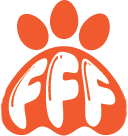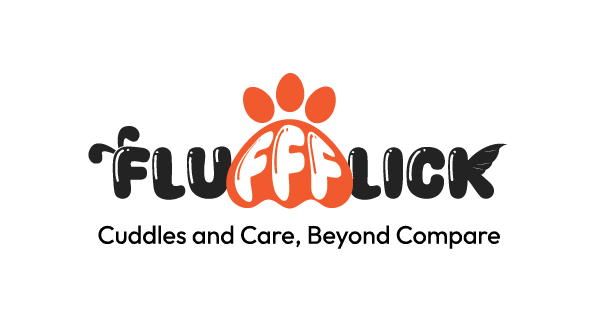Pet obesity is a growing concern for many pet owners, as overweight pets are at a higher risk for various health issues such as diabetes, arthritis, and heart disease. Maintaining a healthy weight through proper feeding and exercise is essential for your pet’s overall well-being. In this article, we’ll cover how to prevent pet obesity by focusing on balanced diets, portion control, and exercise routines to help your furry friend stay fit.
1. How to Prevent Pet Obesity
Preventing pet obesity begins with understanding the root causes: overfeeding, lack of exercise, and inappropriate diets. Here’s how to tackle these issues:
- Portion Control: The most common cause of pet obesity is overfeeding. Many pet owners don’t realize how much their pet needs to eat. Stick to recommended serving sizes based on your pet’s size, age, and activity level.
- Avoid Table Scraps: It’s tempting to feed your pet food from your plate, but this can lead to unnecessary calorie intake and contribute to weight gain.
- Treats in Moderation: Treats are fine in small quantities, but they should not make up more than 10% of your pet’s daily calorie intake. Opt for low-calorie, healthy treats when possible.
Regularly monitoring your pet’s weight and adjusting their diet as needed is essential for long-term health. If your pet is already overweight, it’s time to look at strategies for weight management.
2. Diet and Exercise Tips for Overweight Pets
If your dog or cat is already overweight, diet and exercise tips for overweight pets can help them shed those extra pounds. Start with these basic guidelines:
- Gradual Calorie Reduction: Drastically reducing calories can be harmful, so it’s important to reduce your pet’s calorie intake gradually. Work with your vet to determine how many calories your pet needs to achieve a healthy weight.
- Increase Physical Activity: Regular exercise is vital for weight loss. Incorporate daily walks for dogs and interactive playtime for cats. Aim for at least 30 minutes of activity per day, and gradually increase the intensity or duration.
- Feeding Schedule: Instead of free feeding, establish regular mealtimes. Measure each portion carefully and avoid leaving food out all day.
Both a calorie-controlled diet and consistent exercise routine are key to helping your pet return to a healthy weight.
3. Weight Management Tips for Dogs and Cats
Maintaining a healthy weight requires a balance between caloric intake and physical activity. Here are some weight management tips for dogs and cats:
- Consult with Your Vet: Your vet can provide personalized recommendations, including prescription diets if necessary, for weight loss. They will help you set realistic goals based on your pet’s current health status.
- Monitor Body Condition: Instead of solely relying on the scale, use body condition scoring (BCS) to evaluate your pet’s weight. You should be able to feel your pet’s ribs easily without pressing too hard and observe a noticeable waistline from above.
- Slow Feeding: For pets who eat too quickly, consider using a slow-feeder bowl. This encourages your pet to take their time eating, reducing the likelihood of overeating.
- Low-Calorie, Nutrient-Rich Food: Choose foods that are low in calories but still provide essential nutrients, including fiber to keep your pet feeling full longer.
Tracking your pet’s progress with regular weigh-ins can help keep them on track with their weight loss goals.
4. Best Foods for Overweight Pets
Choosing the best foods for overweight pets can make a significant difference in their weight management journey. Look for foods that are specifically designed for weight loss or maintenance:
- High-Protein, Low-Fat Diets: Foods rich in protein help maintain lean muscle mass while low-fat options reduce calorie intake. Protein also promotes satiety, helping your pet feel fuller longer.
- Fiber-Rich Foods: Fiber helps regulate digestion and makes pets feel full, reducing the urge to overeat. Many weight management formulas contain added fibre for this reason.
- Prescription Diets: For pets struggling with obesity, your vet may recommend a prescription diet formulated for weight loss. These foods are nutritionally balanced but lower in calories.
- Avoiding Fillers: Steer clear of pet foods that contain high amounts of fillers, such as corn and soy, which offer little nutritional value and can contribute to weight gain.
Feeding your pet the right kind of food is one of the most effective ways to manage their weight.
5. How Much Should I Feed My Overweight Dog?
One of the most common questions pet owners ask is, “how much should I feed my overweight dog?” The answer depends on several factors, including your dog’s current weight, activity level, and breed.
- Consult the Packaging: Most pet food packages include feeding guidelines based on weight, but these are general recommendations. Use them as a starting point, but adjust based on your dog’s needs and activity level.
- Calculate Caloric Needs: Your vet can help you calculate the number of calories your dog needs to lose weight safely. This typically involves a 10-20% reduction in their current caloric intake.
- Split Meals: Instead of feeding your dog one or two large meals a day, divide their food into smaller, more frequent meals. This can help manage hunger and prevent overeating.
Remember, it’s important not to rush the weight loss process. Gradual, steady weight loss is the safest and most effective way to help your dog reach their goal.
Conclusion
Preventing and managing pet obesity is all about maintaining a balance between diet and exercise. By following portion control, selecting the best foods for overweight pets, and establishing regular exercise routines, you can ensure your dog or cat stays at a healthy weight. If your pet is already overweight, consult your vet for personalized advice and make gradual changes to their diet and activity levels. Small steps can lead to significant improvements in your pet’s health and quality of life.

